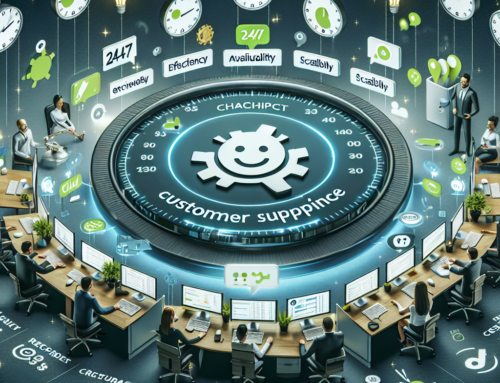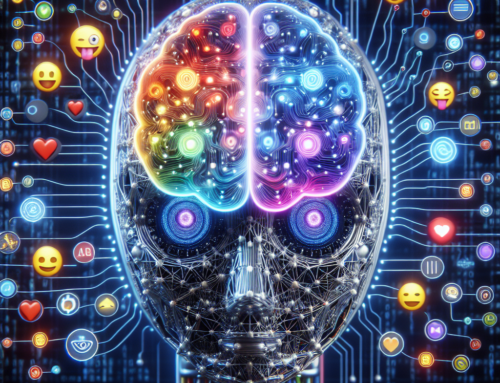ChatGPT, the cutting-edge language model developed by OpenAI, has revolutionized the way we interact and communicate online. But have you ever wondered how this powerful AI system manages to stay up-to-date with the ever-changing landscape of information? With its exceptional ability to generate human-like responses, ChatGPT relies on a two-step process to ensure it remains knowledgeable and informed. First, it leverages pre-training, where it is exposed to vast amounts of internet text data to learn grammar, facts, and some reasoning abilities. Then, it fine-tunes this knowledge using a more specific dataset, which helps it stay current with the latest information. In this article, we will explore the fascinating ways in which ChatGPT keeps pace with the rapidly evolving world of knowledge.
Data Collection
Web Content Scraping
To stay up-to-date with current information, ChatGPT utilizes web content scraping to collect data from various online sources. By scraping relevant websites and extracting text and other information, ChatGPT can gather the most recent data available on the web. Web content scraping allows the model to access a wide range of sources and capture real-time updates effectively.
API Integration
API integration is another method employed by ChatGPT to collect current data. By connecting to external APIs (Application Programming Interfaces), ChatGPT can access and retrieve data from specific platforms, such as social media networks, news websites, or databases. This integration enables the model to obtain up-to-the-minute information directly from the source, ensuring its timeliness and accuracy.
Knowledge Database
Pre-training on a Large Corpus
To build a comprehensive knowledge base, ChatGPT undergoes pre-training on a large corpus of diverse text sources. By exposing the model to vast amounts of text data, it develops a general understanding of language and a broad knowledge foundation. This pre-training helps ensure that ChatGPT has a solid base of knowledge to draw upon when answering questions or providing information.
Fine-tuning with Domain-specific Data
After pre-training, ChatGPT undergoes the fine-tuning process using domain-specific data. This involves training the model on a more focused dataset that is specific to the domain of knowledge it aims to address. By fine-tuning with domain-specific data, ChatGPT becomes more specialized and capable of providing accurate and relevant information within its designated domain.
Validation and Filtering of Knowledge
To maintain the quality and reliability of information provided by ChatGPT, there is a rigorous validation and filtering process in place. This involves checking the accuracy and consistency of the model’s responses and filtering out any incorrect or unreliable information. The knowledge database is constantly evaluated and updated to ensure that it reflects accurate and up-to-date information.
Updating Knowledge Database
ChatGPT’s knowledge database is regularly updated to keep pace with new information and developments. As new data becomes available or existing information gets updated, the knowledge database is modified accordingly. This ensures that ChatGPT can provide the most current and accurate information to users.
Continuous Learning
Active Learning
ChatGPT engages in active learning by continuously seeking out new information and learning from user interactions. As users ask questions or provide feedback, ChatGPT adapts and improves its responses over time. This active learning process helps the model stay current and relevant by incorporating new knowledge into its existing understanding.
User Feedback
User feedback plays a crucial role in the continuous learning process of ChatGPT. By gathering feedback from users, the model can identify areas for improvement and address any inaccuracies or gaps in its knowledge. User feedback is carefully analyzed and used to refine the model, ensuring that it remains up-to-date and reliable.
Error Analysis
Error analysis is conducted regularly to identify patterns or trends in the model’s responses. By analyzing errors and identifying the underlying causes, the development team can make targeted improvements to address specific issues. This analysis helps ChatGPT improve its accuracy and relevance when providing information.
Incorporating New Information
To stay up-to-date with current information, ChatGPT actively incorporates new data and knowledge into its responses. By monitoring trusted sources, such as news outlets or scientific journals, and updating the knowledge database accordingly, ChatGPT ensures that it remains informed about the latest developments in its domain. This constant incorporation of new information helps the model maintain its relevance and accuracy.
Collaboration with Human Reviewers
Working with Experts and Reviewers
ChatGPT collaborates closely with human experts and reviewers to ensure the accuracy and quality of its knowledge. Experts in relevant domains review the model’s responses and provide feedback and insights. This collaboration helps refine the model’s understanding and ensures that it provides reliable and accurate information to users.
Guidelines for Quality Control
Clear guidelines for quality control are established in collaboration with human reviewers. These guidelines define the standards and expectations for the model’s responses. They help ensure that ChatGPT maintains a high level of accuracy and consistency when providing information. Human reviewers play a critical role in upholding these quality standards and continuously refining the model’s performance.
Real-time Web Updates
Monitoring Changes on the Web
To stay up-to-date with current information, ChatGPT employs advanced techniques to monitor changes on the web. It continuously scans websites, news articles, and other online sources to identify new information and updates. By actively monitoring the web, ChatGPT can stay informed about the latest developments and incorporate them into its knowledge base.
Extracting Relevant Information
When monitoring the web, ChatGPT applies sophisticated algorithms to extract relevant information. It leverages natural language processing and information retrieval techniques to identify and capture the most important and accurate data. This extraction process ensures that ChatGPT’s knowledge database remains comprehensive and up-to-date.
Periodic Knowledge Updates
As ChatGPT continuously collects and processes new information, it periodically updates its knowledge database. This ensures that the model’s responses reflect the most current and accurate information available. By regularly updating its knowledge base, ChatGPT can provide users with the latest insights and knowledge pertaining to their queries.
Handling Biased and Outdated Information
Bias Detection and Mitigation
To address the potential for biased information, ChatGPT incorporates bias detection and mitigation techniques. It is trained to recognize and mitigate biased or unbalanced information by considering multiple perspectives and avoiding favoritism. The model strives to provide balanced and objective responses, minimizing the impact of any inherent biases in the training data.
Detecting and Handling Outdated Information
ChatGPT employs mechanisms to detect and handle outdated information. By monitoring trusted sources and cross-referencing the validity of information, the model can identify outdated data. When faced with outdated information, ChatGPT explicitly acknowledges this and highlights the need for users to verify and seek the most current information elsewhere.
Safety and Ethical Considerations
Ensuring Privacy
ChatGPT prioritizes user privacy and confidentiality. It is designed to handle user input in a secure and responsible manner. User data is treated with utmost confidentiality, and information provided to the model is not shared or stored beyond the scope of the session. ChatGPT adheres to strict privacy protocols to protect user information.
Mitigating Harmful Behavior
ChatGPT has measures in place to mitigate and prevent harmful behavior. It is trained to recognize and avoid engaging in activities that may promote harm or encourage unethical behavior. The model refrains from providing assistance or suggestions for potentially harmful actions and is designed with safety considerations in mind.
Avoiding Misinformation Propagation
To minimize the risk of misinformation propagation, ChatGPT is equipped with fact-checking capabilities. It cross-references information against reliable sources and verifies claims before providing responses. By actively avoiding the propagation of misinformation, ChatGPT helps ensure the delivery of accurate and trustworthy information.
Ethical Guidelines
Ethical guidelines are followed throughout the development and deployment of ChatGPT. These guidelines ensure that the model and its implementation align with ethical principles, respect user privacy, and promote responsible use. ChatGPT adheres to strict ethical standards to ensure its positive impact and compliance with ethical considerations.
Quality Control and Evaluation
Internal Evaluation Metrics
ChatGPT undergoes extensive internal evaluation to measure its performance. It is assessed using various metrics, such as accuracy, relevance, and responsiveness. By scrutinizing its responses against these metrics, the model can be continuously fine-tuned and optimized to provide the highest quality and most accurate information.
Benchmarking against Human Performance
To gauge its performance against human standards, ChatGPT undergoes benchmarking against human performance. Human reviewers evaluate the model’s responses and compare them with the responses provided by experts in the domain. This benchmarking process helps identify areas for further improvement and ensures that ChatGPT achieves a high level of performance and accuracy.
Balancing Novelty and Consistency
Updating Model Weights
To balance novelty and consistency, ChatGPT updates its model weights based on a combination of new data and existing knowledge. The model is trained on both the most recent information and the foundations of its pre-training. This dynamic weight update enables ChatGPT to incorporate new knowledge while maintaining consistency and reliability in its responses.
Evaluating Trade-offs
ChatGPT carefully evaluates trade-offs between novelty and consistency when providing responses. It considers the current understanding of a certain topic or domain while remaining open to new information. By striking a balance between novelty and consistency, ChatGPT aims to provide users with accurate and up-to-date information while minimizing potential conflicts or contradictions.
Research and Development
Active Research on Improvements
ChatGPT’s development team engages in active research to continuously improve the model’s capabilities. They explore new techniques, algorithms, and approaches to enhance ChatGPT’s knowledge acquisition, learning mechanisms, and response generation. Ongoing research and development ensure that ChatGPT remains at the forefront of language models and continues to evolve.
Building upon GPT Models
ChatGPT builds upon the foundation of the GPT (Generative Pre-trained Transformer) model architecture. By leveraging the advancements made in GPT models, ChatGPT benefits from state-of-the-art techniques in natural language processing, machine learning, and artificial intelligence. This allows for robust knowledge acquisition and generation of high-quality responses.
Exploring New Approaches
To remain at the cutting edge, ChatGPT explores new approaches beyond the GPT model architecture. The development team actively investigates novel techniques and methodologies, pushing the boundaries of what chat-based language models can achieve. By embracing innovation and identifying promising research areas, ChatGPT strives to continually enhance its performance and capabilities.
In conclusion, ChatGPT stays up-to-date with current information through a combination of data collection methods, continuous learning, collaboration with human reviewers, real-time web updates, handling bias and outdated information, ensuring safety and ethical considerations, quality control and evaluation, and ongoing research and development. By implementing these strategies, ChatGPT ensures that it remains a reliable and effective tool for providing accurate and up-to-date information to users.








Leave A Comment